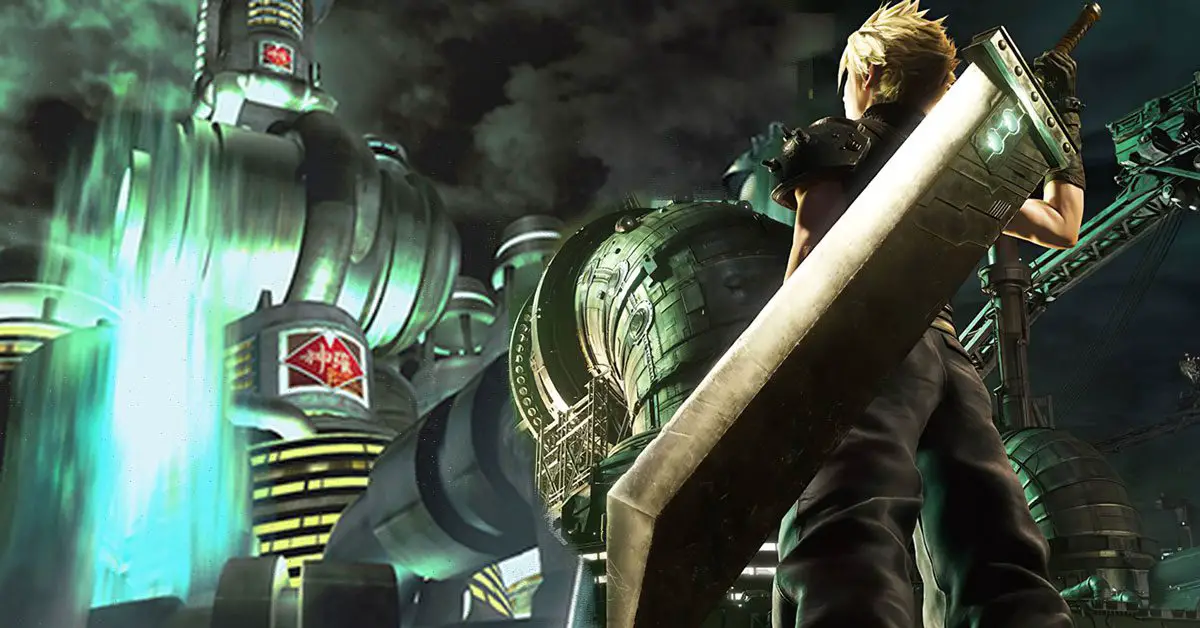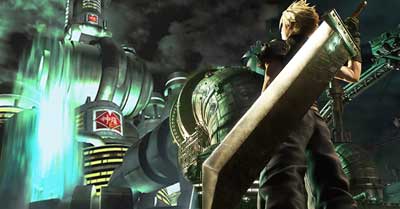
The long-anticipated remake of Final Fantasy VII has finally happened. So let’s scratch the surface of how the original has evolved into the Remake.
The most obvious overhaul is the combat system. It borrows the intricacies of Final Fantasy IX and Final Fantasy XV‘s combat and blends them with the original game’s materia system. The result is a fluid, cinematic system with more complexity than any previous Final Fantasy and one of the best combat systems of this generation. Switching between the party members could easily feel superficial, but each character provides a unique layer to the experience.
Adding layers to the original was clearly a driving philosophy behind the remake. Areas such as Wall Market, the Sector 7 slums, and the area surrounding Aerith’s house have been lovingly recreated with HD graphics. Previously, traveling through the slums of Midgar would take around ten minutes, spanning across a couple of pre-rendered backgrounds. Now, these journeys will take closer to an hour.
That might sound drab, but it’s not when the game is pre-occupied with adding layers to the cast of characters too. We’re granted a substantial insight into Avalanche as a wider organization, along with Jessie, Biggs, and Wedge. What was once a throwaway reference to two Star Wars characters now raises the stakes of the entire game, something the sequel-era Star Wars could learn a thing or two from. The matrix of relationships that exists within the world has you watching the screen rather than the clock. Each moment spent with your ever-rotating party of core characters is something to be treasured.
Reimagining beloved characters
Of course, it’s the core characters that reeled us to begin with – skeptics, first-timers, and those who have begged for Final Fantasy VII to be remade for over a decade. The remake establishes greater complexity to Cloud’s backstory with future installments in mind, yet his growth over the 40 hours of this episode remains immensely satisfying.
Our attachment to the likes of Tifa, Barret, and Aerith only grows stronger. Considering the goofy nature that was part of Final Fantasy VII‘s charm, it would have been so easy for these relationships to collapse. Instead of reading the lines in your head, you’re listening to actors voice them. However, they manage to inject yet more life into these beloved characters.
Style and substance
That brings us to the music. It encapsulates everything the remake does successfully, managing to thread old motifs from the original through the new. Some are more subtle than others, but the soundtrack rarely misses a beat. It helps bring atmosphere to the Midgar slums, particularly at night.
Whilst the game sacrifices some of the intimacy inside each building that came with the cramped nature of the original, thanks to both design limitation and stylistic decision, the remake blends music and incidental dialogue to make up for that.
Having sold over 3.5m copies in its first three days, it’s safe to say there’s going to be a lot more discussion to come from this game. Keep an eye out for a more spoiler-filled analysis of what’s new in the Final Fantasy VII Remake coming soon.

Andrew, I love the second take on the VII Remake – although I personally agree with almost every word Drew had to say about it, I am glad that you found so much to enjoy and to be excited about.
Frankly I was more disappointed and annoyed by my own reservations about it sort of going away and then coming back…basically, I spent most of the last decade nay-saying the idea of a VII Remake, and I was confident that any attempt to make one would disappoint the fans of the series. FF fans aren’t always an understanding bunch, after all. I felt more and more confident about my pessimism until I played the demo, which really impressed me. I got the game, and I was loving nearly every minute of the first handful of chapters. I thought, “Dude, you were wrong – this is pretty damn great! Maybe they really did pull it off!” And then….
Well, I’ll just say that I really hated nearly everything between Chapter 4 and the Wall Market, especially once I stepped onto a motorcycle and fought a damn boss battle. I started to be even more disappointed with the Remake than I ever thought I’d be…not because it’s a terrible game, but just because I thought my nay-saying was proven wrong, and then the game kinda started to let me down in other ways.
(Had to paste more into a second comment, whoopsie)
I’ll just say this…I think Andrea and Madame M were great new characters, and they were written very well – so much better than Barrett, who I think was written worse than almost anyone I’ve seen in anything for years. I think Cloud is pretty boring, but Aerith….well, I was never really the biggest fan before, but I totally fell in love with Aerith in the Remake. She’s such a great character now that I probably WILL cry when she dies, which didn’t happen when I played the original. (Oh, and every scene where they showed Young Aerith crying about something…man, it broke my damn heart, I actually almost cried a few times in Part I!)
End of my comments! I hoped that I’d disagree with whoever wrote up the review for this one….unfortunately I still completely agree with what Drew had to say, but you’ve made me want to take another look at a few things in the game and see if perhaps I’m being a bit too harsh.